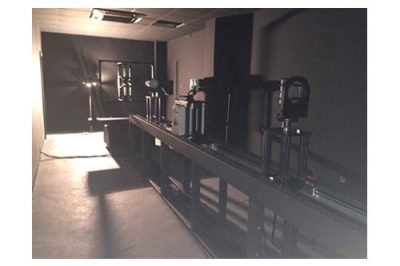
Introduction The rapid evolution of lighting systems, especially with the advent of LEDs, has raised concerns about the photobiological safety of these light sources. IEC TR 62471-2 (2009) is a critical guideline addressing the non-laser optical radiation safety, primarily focusing on the hazards these systems pose to human health, especially the eyes and skin. The standard is widely applicable t...

The optical radiation safety test system‘s (EN62471-C) complete band range satisfies the IEC/EN 62471/CIE S009 standard, the IEC/TR 62778 standard, the GB/T 20145 standard, the EU regulation, and other relevant standards. This technology helps the photobiological safety of lamp. The technology can evaluate the photobiological risk posed by a wide range of lighting options. Automatic risk gro...

With the popularity of LED lighting, the photobiological safety testing issues caused by its light radiation have attracted public attention, the most important of which is the blue light hazard. Optical radiation not only adversely affects the human retina, but may also harm the cornea, conjunctiva, lens and skin of our eyes. This paper intends to analyze and elaborate on photobiosafety from the ...

Definition of Photobiosafety: Photobiological safety means that the light emitted by various lamps and lamp systems (including various light-emitting devices) cannot have harmful radiation effects on living things (mainly humans). According to the wavelength of radiation and the physiological visual effects of the human eye, optical radiation can be divided into three parts: ultraviolet radiation,...

1. What are the prevention and control plans and standards for juvenile myopia? 1.1 Adolescent myopia prevention and control program: With the increasing rate of myopia among teenagers, more and more students are becoming shortsighted. In order to protect the children’s eyes and let them have a bright future. Eight ministries and commissions including the Ministry of Education and the Nation...

IEC 60825-1: 2007 is a standard issued by the European Union, applicable to safety of laser products emitting laser radiation in the wavelength range 180 nm to 1 mm. Its scope of application would be only applied to LASER products after September 2010, and LED lighting products are no longer covered by the latest version of IEC / EN 60825-1, but need to be assessed in accordance with IEC / EN 6247...

With the fast development of electrical industry in China, manufacturing enterprises scale grows constantly, international electric safety standards apply more and more widely. Lighting industry standards are also widely used. International standard IEC60598 general requirements and test cover classification of luminaries according to degree of protection against ingress of dust, solid objects and...

IEC/EN 62471 is to assess relative optical radiation safety of different lamps and lamp system. It fully replaces IEC/EN60825 regarding the requirements of LED products energy level and adds the requirements of photobiological, including spectral irradiance and spectral radiance. According to the test data, it classify the hazard level of the products, including exemption level, low hazard level, ...

SSL (Solid State Lighting) product’s color quality is very important; people pay more and more attention to it. CRI already has 40 years history. CIR is a quantitative measure of the ability of a light source to reveal the colors of various objects faithfully in comparison with an ideal or natural light source, which is color fidelity degree. There are many problems when CRI is applied in LED at...

IEC/EN62471 is the European Union’s testing standards for laser products (including LED). IEC/EN 62471 is designed to evaluate the optical radiation hazards associated with different lamps and lamp systems. And it is also used to replace the IEC/EN60825 standards in the requirements of the LED product energy level. It increased the requirements of the optical biology, including radiation intensi...